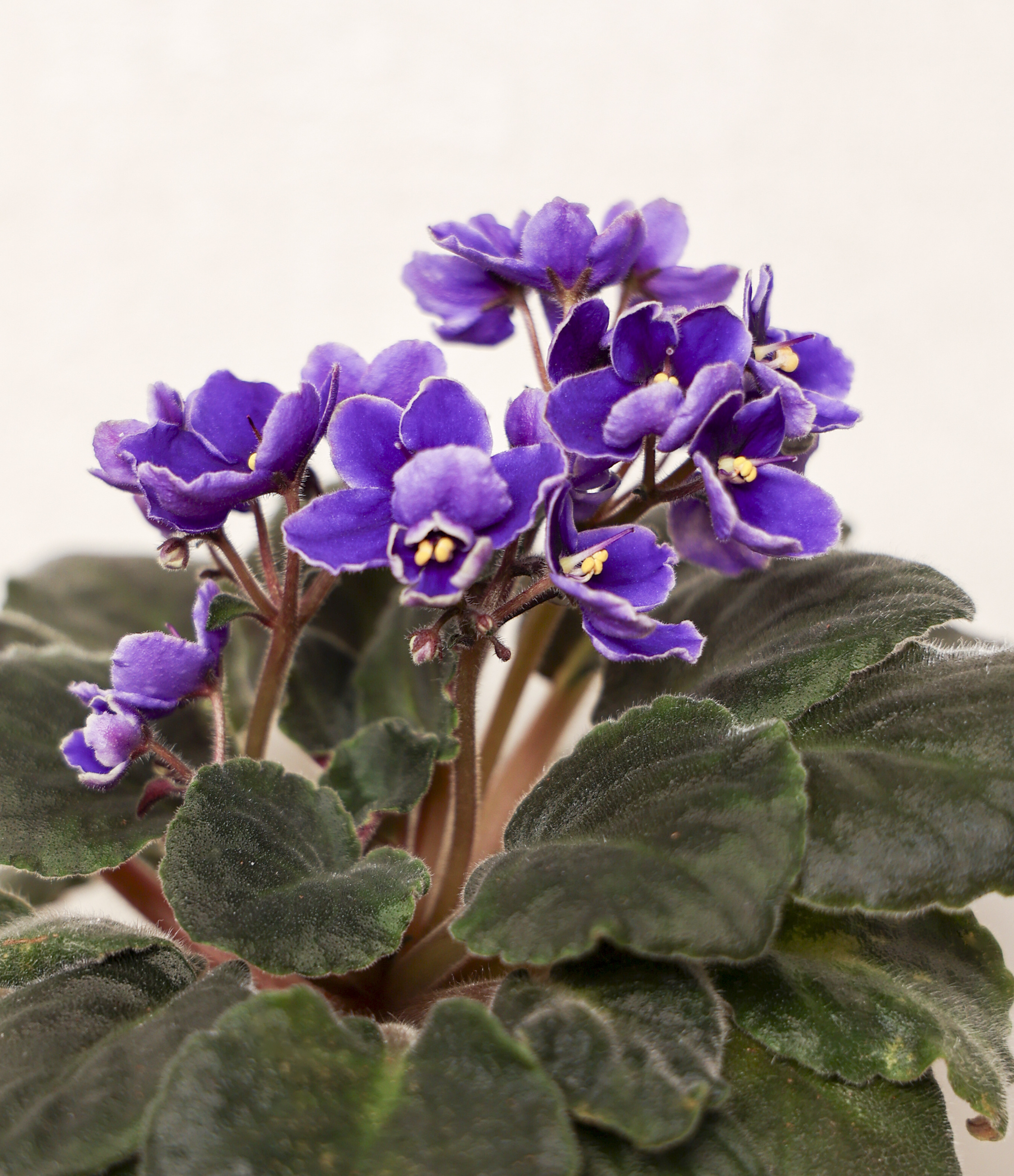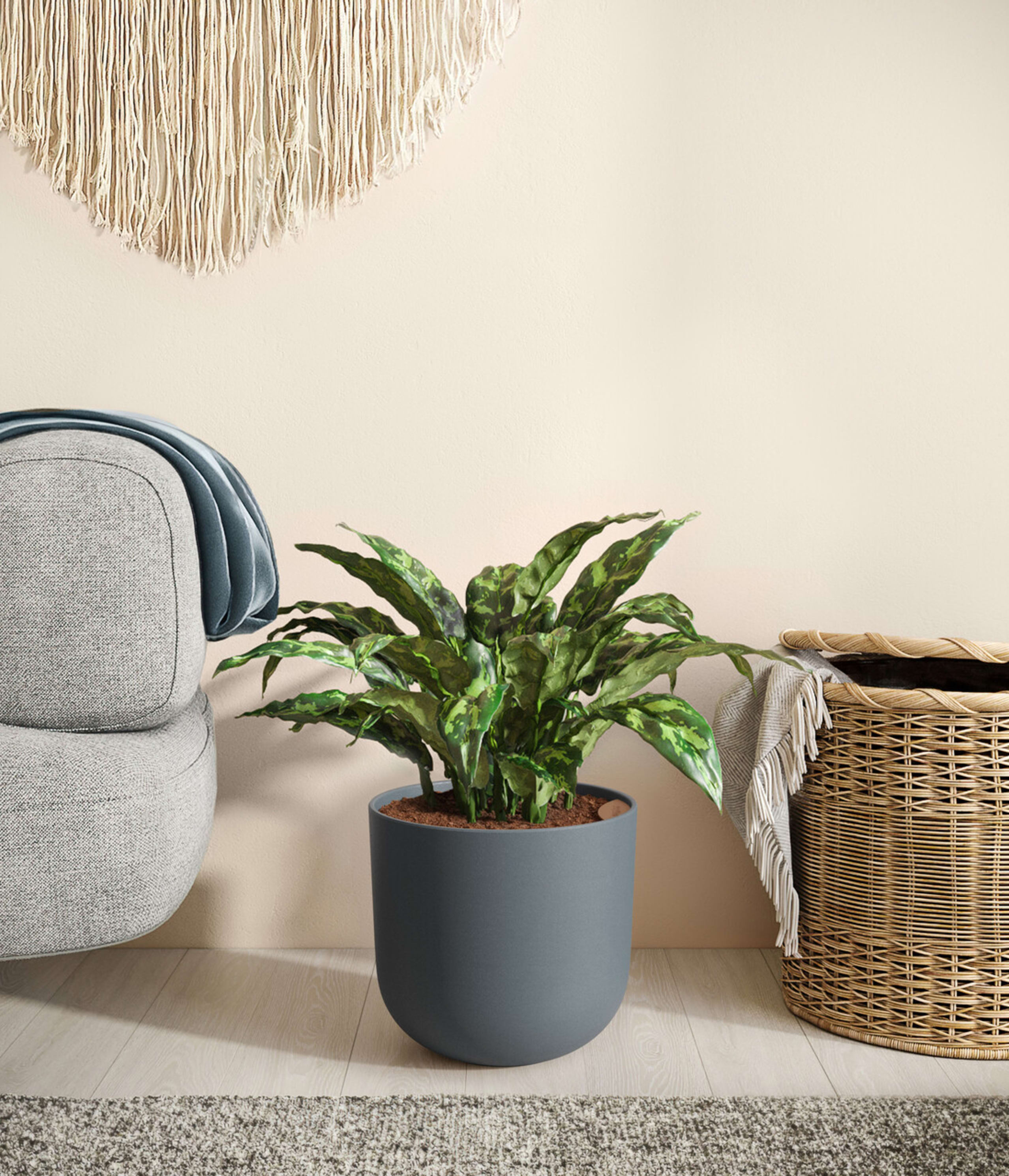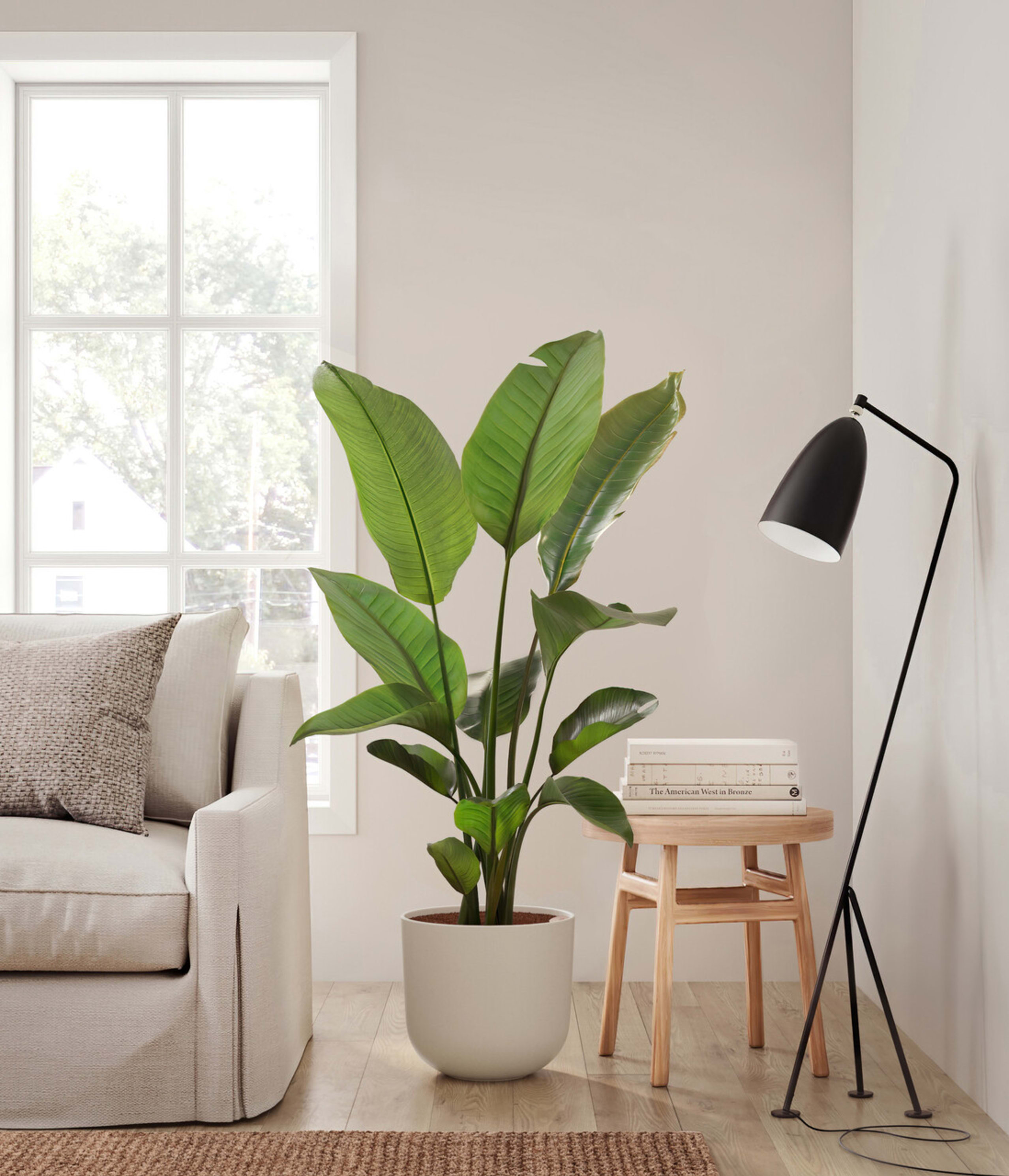About African Violet
African Violets are one of the most beloved houseplants for good reason. Exquisite violet flowers bloom from the stunning evergreen foliage to produce unmatched radiance.
Potted in a premium quality self-watering pot with a soft matte finish, this stunning plant is compact and low-growing, reaching up to nine inches tall and wide.
Other common names
- Saintpaulia ionantha
- Usambara Violet
How Often Should I Water My African Violet
With easyplant, watering your African Violet is simple. Make sure to check the easyplant reservoir once a month and fill it if empty, and you’re all set!
Without an Easyplant pot, it's important to be cautious about watering your African violet to avoid overwatering or underwatering it. This type of plant prefers moist soil, so make sure to let the soil dry out slightly between waterings. Consistency is key throughout the year, but keep in mind that you may need to reduce the frequency of watering a bit during the winter months since it takes longer for the soil to dry.
African Violet Light Needs
African violet grows best in a space with bright indirect light, where the sun rays are diffused, and can also adapt to spaces with medium to low light. Avoid placing it in spaces without natural light or with direct sunlight.
African Violet Plant Care
To help it grow optimally and evenly, occasionally dust the leaves and rotate the pot by a ¼ turn once a month. African Violets, like many blooming plants, benefit from a process called 'deadheading'. When the exquisite violet flowers start to fade and die off, feel free to remove them. This routine maintenance helps the plant focus its energy on producing new blooms and maintaining overall health. You may also prune the stems when they dry up to assist the new growth. Remember, regularly removing spent flowers is a normal part of care for plants that bloom, so don't worry if you find yourself doing this often.
Temperature & Humidity
African Violets prefer warm and humid conditions. They thrive in environments that sit at roughly 70°F (21°C). Don’t let temperatures fall below 60°F (15°C) as the African Violet will have a hard time growing in those conditions. Additionally, make sure to avoid temperature and humidity fluctuations, including sudden drafts to keep your plant healthy.
Are African Violet Toxic for Pets & Kids?
It should come as a major relief for plant lovers and parents that the African Violet is not considered toxic to pets or children. As with all plants, it’s important to remain cautious when dealing with plants as touching and ingesting them can still cause certain reactions.
Troubleshooting Common Problems with African Violet
If your African Violet is not producing those stunning violet flowers, it’s likely a result of not getting enough light, warmth, and/or humidity. In this case, try moving the plant to a brighter spot or using fluorescent lighting to give it more light. And if the temperature and humidity in the room don’t seem to be enough, try moving your African Violet to a spot with more humid conditions like the bathroom or kitchen.
Frequently Asked Questions about African Violet Plant
Where is the best place to put an African Violet?

A spot that receives bright, indirect light, such as near a north- or east-facing window, is best. They also thrive in stable temperatures and away from drafts.
Are African violets hard to care for?

African Violets are not particularly hard to care for, but they do require attention to ensure they thrive. They need the right balance of light, water, and humidity.
Do African violets need a lot of sun?

African Violets prefer indirect sunlight. Direct exposure to strong sun can damage the leaves. A north- or east-facing window is ideal.

 Small Plants
Small Plants Medium Plants
Medium Plants Plants Collections
Plants Collections Large Plants
Large Plants Huge Plants
Huge Plants